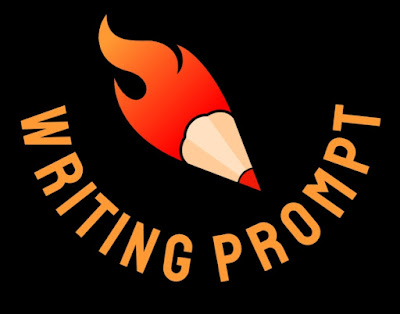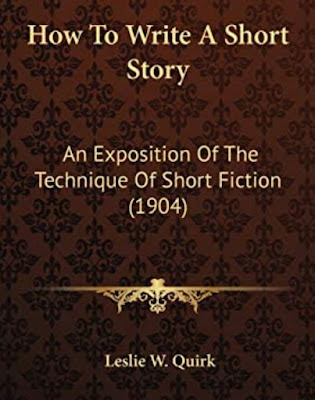THE PREPARATION OF MANUSCRIPT
by Leslie Quirk
When
you have expended your best energies on your story, and by careful
revision have brought it to the highest degree of excellence of which
you are capable, it is ready to be dressed up in a fetching manner for
the editorial eye. You must now recopy it in such a way that no mark of
your workmanship in recasting and reconstructing will show. Fine clothes
do not make an acceptance, any more than they make a gentleman, but
they command respect in both cases.
First of all, your manuscript should be neatly and correctly
typewritten. I don't care how legibly you may write, you can't compare
with the printed letters of the machine. Moreover, you are stringing a
thousand-word story over great pads of paper, when you might print it on
four thin sheets. An editor's time
is economized as much as possible, and he will run through three
typewritten stories sooner than plod through one penscript. He knows,
furthermore, that the careful, experienced writer will send him type
copy, and that the chances are ten to one that the script is full of
blunders and errors common to the beginner, who has never studied the
subject of writing. Penscripts are signs of inexperience. Editors
appreciate this fact, and the sooner young writers do, the better will
be their chances of success in literature.
In typewriting a manuscript, it should be doubly spaced. This is
done for two reasons. First, it is much easier on the eyes if the lines
are not close together. Munsey is said to get three thousand manuscripts
each month. Of course, these are handled by a great many readers for
the company, but at the same time one man has to read a large number of
them. The strain on the eyes will be readily apparent, and the
thoughtfulness of the writer who seeks to make easier the task by double
spacing his work
will be appreciated. Again, if a manuscript can be made acceptable by
changing it somewhat, the space between the lines gives plenty of room
for correction. Nothing that will serve to lessen the work of an editor
should be left undone.
Now that the story is typewritten, the name and address should be
added in the upper, left-hand corner. It is much better to do this with
the machine than with a pen, as most people write their names so
hurriedly that it is almost impossible to decipher them. It seems to me
that there is no reason for a signature on the manuscript, though some
disagree on this point. At all events, it is imperative that the name
and address, in some form, be on the first page.
The number of words should now be estimated and placed in the
upper right-hand corner. This estimate need not be exact; indeed it is
foolish to say the manuscript contains 3,449 words, or any other precise
number. It should, however, be fairly accurate. Count the number of
words in the average line, the
number of lines on a page, and the number of pages. No allowance should
be made for short lines. In this way, it is easy to get the approximate
length of the story. The editor will appreciate this courtesy, as it
enables him to tell at a glance the amount of space the story would
occupy in his magazine.
The top of the first page of your manuscript will now appear something like this:
| J. D. Banner,
|
3,500 words.
|
Blank City, N. Y.
THE REVOLT OF UNCLE JOHN.
By
James Darken Banner
|
Just beneath the title of the story should
be placed the name of the author as he wishes it to appear in print. If
he is writing under a nom-de-plume, an affectation countenanced neither by good sense nor good business ability, it should be placed here.
A soiled manuscript tells its own story of previous rejections, and invites others. "You are not taking an unfair advantage of an editor," says Albert Bigelow Paine,
"when you renovate your much-traveled manuscript, or recopy it on clean
paper. You are taking an unfair advantage of your manuscript when you
do not do it, and you are insulting the editor, who does not care where
your story or article or poem has been, so long as it is presented to
him invitingly."
The paper on which the story is copied should be of good texture,
light in weight, but not transparent. A size about 8½ by 11, folded
twice, has a great many advantages. Never fasten the sheets of your
manuscript together in any way. They should be loose, to be shuffled as
the editor finds need. Two sizes of envelopes should be purchased, one
to fit within the other without folding. A stamped, self addressed
envelope should accompany every manuscript.
If the name and address of the writer are on the first page, no
explanatory note is necessary. As a matter of courtesy, however, a very
brief one may be sent. It should be somewhat along the
following lines:
Editor, Blank Magazine,
New York City.
Dear Sir:
The
enclosed manuscript is submitted with the hope that it may be found
available for publication in The Blank Magazine, at your usual rates.
Never display your lack of common sense by any of the petty little
tricks common to the writers who believe their manuscripts are not read.
If an editor finds the sheets of your story lightly gummed together, he
will not take the trouble to separate them. Neither will he sort out
pages not properly numbered. He cannot afford to waste time on writers
who stoop to such detestable actions. He knows they will never be able
to please him with their work.
Your manuscript will be read if it is worth while and properly
prepared. If your first page is dull, your second may never be read. But
if you have good material, served up in such a way that the reading is
more of a pleasure than a task, your manuscript will be considered on its merits, whether it is signed by Rudyard Kipling or by John Brown.
I have had the pleasure of reading manuscripts by such writers as Jack London, Albert Bigelow Paine, Charles Battell Loomis,
and a great many of the best authors of the day; and I say
unhesitatingly that their copy, without exception, was the neatest and
most correct that ever came under my eye. These men have won their
positions in current literature by pure merit, and their example in the
preparation of copy is worth following.
Excepted from How to Write a Short Story by Leslie Quirk




